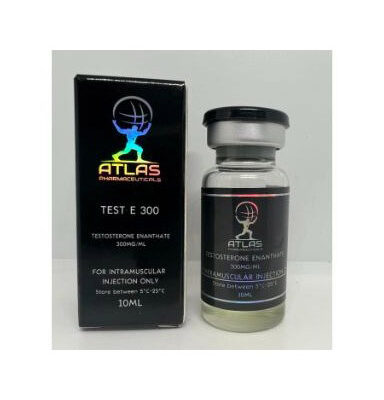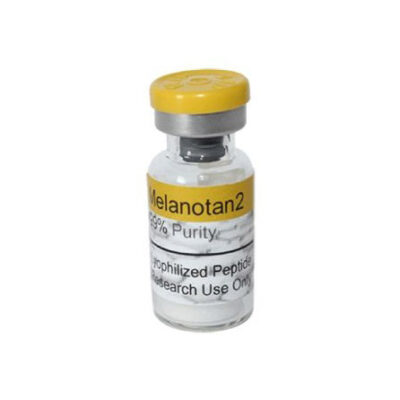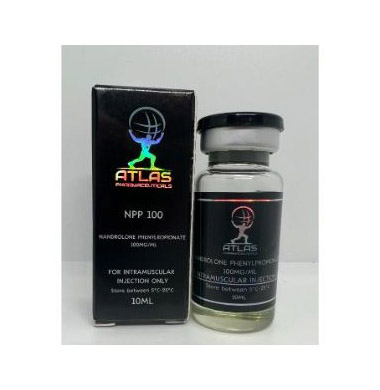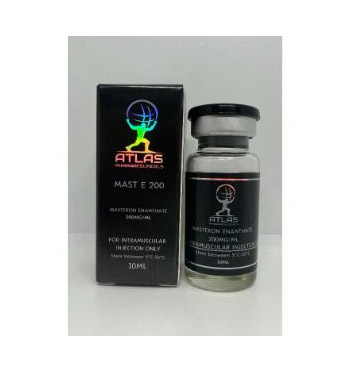Description
BUY BOTOX INJECTION
Botox: Cosmetic and medical uses
Botox is a drug that temporarily paralyzes muscle. In small doses, it can reduce skin wrinkles and help treat a range of medical conditions, including eyelid spasms, Raynaud’s disease, and some types of migraine.
Botox is a protein made from Botulinum toxin, which the bacterium Clostridium botulinum produces. This is the same toxin that causes botulism.
Botox is a toxin, but when doctors use it correctly and in small doses, it can have benefits. It has both cosmetic and medical uses.
As a cosmetic treatment, Botox injections can reduce the appearance of skin wrinkles.
Also, the Food and Drug Administration (FDA) have approved it as a treatment for various health issues, including eyelid spasms, excessive sweating, some bladder disorders, and migraine.
In this article, we explain how Botox works and explore its uses, side effects, and other risks.

Botox derives from C. botulinum bacteria, which are present in many natural settings, including soil, lakes, forests, and the intestinal tracts of mammals and fish.
Naturally occurring C. botulinum bacteria and spores are generally harmless. Problems only arise when the spores transform and the cell population increases. At a certain point, the bacteria begin producing Botulinum toxin, the deadly neurotoxin responsible for botulism.
Botulinum toxin is extremely dangerous. Some scientists have estimated that 1 gram of a crystalline form of the toxin could kill 1 million people and that a couple of kilograms could kill every human on the planet.
However, when Botox is appropriately used in a therapeutic context, it is safe and has few side effects, the American Osteopathic College of Dermatology report.
Manufacturers make Botox injections with very small doses of Botulinum toxin. The drug can temporarily paralyze muscles, which can benefit people with various muscle or nerve disorders.
Commercial preparations of Botulinum toxin include:
- onabotulinumtoxin A (Botox)
- abobotulinumtoxin A (Dysport)
- incobotulinumtoxin A (Xeomin)
- rimabotulinumtoxin B (Myobloc)
- prabotulinumtoxin A (Jeuveau)
People casually use the term “Botox” to describe all of these products, though Botox is a registered trademark that one company owns.
Botox is a neurotoxin. These substances target the nervous system, disrupting the nerve signaling processes that stimulate muscle contraction. This is how the drug causes temporary muscle paralysis.
In order for any muscle to contract, the nerves release a chemical messenger called acetylcholine at the junction where nerve endings meet muscle cells. Acetylcholine attaches to receptors on the muscle cells and causes the cells to contract, or shorten.
Botox injections prevent the release of acetylcholine, which stops the muscle cells from contracting. In this way, the toxin helps the muscles to become less stiff.
The primary use of Botox is reducing the appearance of facial wrinkles.
According to the American Board of Cosmetic Surgery, Botox injections are the most popular cosmetic procedure nationwide. In 2016, over 7 million people had Botox treatments.
The effects are temporary, lasting 3–12 months, depending on the type of treatment.
People often request the injections in the following areas of the face:
- wrinkles between the eyebrows, called frown lines, glabellar lines, or elevens
- wrinkles around the eyes, known as crow’s feet
- horizontal creases in the forehead
- lines at the corners of the mouth
- “cobblestone” skin on the chin
However, the FDA have only approved the injections for use around the eyes and on the forehead.
Research has not shown whether Botox could improve dark circles under the eyes. Learn more here.
Some people also try Botox to improve the appearance of their hair. There is little evidence that this works, however. Find out more here.
Healthcare professionals also use Botox to treat a variety of medical conditions, most of which affect the neuromuscular system.
The FDA have approved Botox for the following uses. Unless otherwise specified, the approval is for use in people 18 or older:
- upper limb spasticity, in anyone older than 2 years
- crossed eyes, or strabismus, in those older than 12 years
- severe underarm sweating, or hyperhidrosis
- preventing migraine in people whose migraine headaches last at least 4 hours on 15 or more days per month
- reducing symptoms of an overactive bladder due to a neurological condition if anticholinergic medications do not help
- eyelid spasms, or blepharospasm, due to dystonia
- a neurological movement disorder called cervical dystonia that affects the head and causes neck pain
Some people also have Botox injections for off-label, or unapproved, uses, including as treatments for:
- alopecia
- sialorrhea, which involves producing too much saliva
- psoriasis
- dyshidrotic eczema, which affects the palms of the hands and soles of the feet
- anismus, a dysfunction of the anal muscle
- post-herpetic neuralgia
- vulvodynia, pain and discomfort in the vagina without a clear cause
- Raynaud’s disease, which affects circulation
- achalasia, an issue with the throat that makes swallowing difficult
Other conditions
According to a 2017 review of existing evidence, other issues and medical conditions that may benefit from off-label Botox use include:
- facial redness and flushing, including during menopause
- keloids and scars from wound healing
- hidradenitis suppurativa, an inflammatory skin disease
- blistering lesions due to Hailey-Hailey disease, a rare genetic disorder
However, confirming that Botox is safe and effective for off-label uses will require more research. Scientists must also establish the appropriate ways to deliver treatment in each case.
Clinicians use Botulinum toxin by diluting the powder in saline and injecting it directly into neuromuscular tissue.
It takes 24–72 hours for the toxin to take effect. Rarely, it can take as long as 5 days for the full effects to show. They may last 3–12 months, depending on the treatment.
People should avoid using Botox during pregnancy or breastfeeding, or if they have ever had an allergic reaction to the drug or any of its ingredients.
What are the safety concerns about Botox during breastfeeding? Find out here.
The cost of Botox depends on various factors, including:
- whether it is for medical or cosmetic purposes
- who provides the treatment
- where the treatment takes place
- the number of Botox units involved
For cosmetic use, The American Society for Aesthetic Plastic Surgery noted in 2016 that, on average:
- the cost of a Botox treatment for frown lines or crows’ feet was $376
- the procedure lasted 30 minutes
- the improvement appeared in 1–5 days
- repeat treatments were necessary every 4–6 months
- the person could return to work at once
Medicare covers the cost of Botox for medical purposes that doctors deem necessary. However, due to the potentially high cost, it is important to confirm that the treatment is covered before the appointment.
When considering Botox for any reason, it is crucial to make sure that the provider is a qualified professional with the appropriate training.
For people looking to have cosmetic Botox, the American Academy of Facial Esthetics have a locator function that can help.
Anyone who believes that Botox might help with a medical condition should speak with their doctor.
People generally tolerate Botox injections well, and side effects are uncommon.
However, depending on the reason for the injections and the person’s response, Botulinum toxin can cause some unwanted effects, including:
- dry eye, following cosmetic uses
- an upset stomach
- numbness
- mild pain, swelling, or bruising around the injection site
- a headache
- temporary eyelid drooping
- temporary unwanted weakness or paralysis in nearby muscles
- urinary problems after treatment for urinary incontinence
- a worsening of neuromuscular disorders
- spatial disorientation or double vision after treatment for strabismus
- corneal ulceration after treatment for blepharitis
- cardiovascular events, such as arrhythmia and myocardial infarction
People should not use Botox if they have:
- a sensitivity or allergy to it
- an infection at the injection site
Depending on the type of treatment, there are concerns that the effects of Botox may extend beyond the injection site, possibly leading to symptoms such as difficulty breathing.
This is more likely to occur in some individuals than others, and genetic factors may play a role.
Also, some people receiving injections of Botulinum toxin type A develop antibodies to the toxin that make subsequent treatments ineffective.
Last medically reviewed on August 11, 2020
- Dermatology
- Surgery
- Cosmetic Medicine / Plastic Surgery
- Headache / Migrain
Can you use Botox under your eyes?
Botox injections may eliminate the appearance of lines and wrinkles around the eyes and mouth. Botox injections may reduce wrinkles under the eyes, but the FDA has not approved this use.
Botulinum toxin, commonly called Botox, is a medication that weakens the muscle contractions that cause wrinkles to appear.
Botox temporarily reduces wrinkles:
- between the brows
- in the forehead
- at the sides of the eyes
- around the mouth
However, the United States Food and Drug Administration (FDA) has not approved the use of Botox under the eyes for cosmetic purposes. Little research has looked into its effectiveness or side effects.
In this article, learn what we currently know about using Botox under the eyes, including possible side effects and alternatives to this procedure.

Botox injections are used to lessen the appearance of wrinkles. Vials of Botox contain three main ingredients: botulinum toxin type A, human albumin, and sodium chloride. The active ingredient, which has the greatest effect, is botulinum toxin A.
When injected into muscles, Botox blocks the nerve impulses that cause a particular muscle to contract. The muscle cannot move, and this reduces the appearance of wrinkles.
Botox can only reduce wrinkles in areas of the face that move. Doctors will usually use it on the frown lines between the eyebrows, called glabellar lines, as well as on lines in the forehead, and crow’s feet at the sides of the eyes.
Botox is not a permanent solution to wrinkles. In 3–6 months, it will stop blocking the nerve impulses, and the muscles will begin to contract. A person will need further injections to maintain results.
Botox has also emerged as a treatment for a number of medical conditions, from migraines to an overactive bladder.
Injecting Botox to treat bags or dark circles under the eyes is an off-label use in the U.S., and the FDA have not approved it.
For this reason, researchers have conducted few studies about this use, and doctors are unsure how effective it may be.
One study from 2003 sought to determine whether Botox injections under and around the eyes could reduce the appearance of wrinkles in these areas. Nineteen female participants received injections. Those who had them in the lower eyelids and crow’s feet area were more likely to report positive results than those who only received injections in their lower eyelids.
These results suggest that Botox injections can make the lower eyelid appear fuller and plumper, helping to reduce wrinkles and bagginess.
The researchers also measured the effects of varying amounts of Botox in the lower eyelid. Patients experienced the strongest results when receiving 8 units of Botox, but they also had the most intense side effects.
Little other research currently exists involving Botox injected under the eyes.
COST
Botox costs can vary depending on who is providing the injections.Botox costs vary by region as well as by specialist. A person who receives Botox is paying not only for the medication, but also for the time of the person performing the procedure, the office space, and other materials used.
According to the American Board of Cosmetic Surgery, the average price of Botox injections ranges from $200 to $1,400 in the U.S. The price also varies, depending on where a clinic is located.
A person can ask for a price estimate before requesting Botox injections. A provider should also be able to give a reasonable estimate about for how Botox will be used and how much time the injections will take.
Because the FDA have not approved Botox for injection under the eyes, a full body of research about the safety this use does not exist.
The area is delicate, and risks of having Botox injected around the eyes include:
- difficulty closing the eyes
- eye drooping
- eye numbness
- swelling of the lower eyelid
Below are some of the other known side effects of Botox:
- bleeding
- bruising
- dizziness
- fainting
- pain at the injection site
- redness
People with certain chronic conditions should not receive Botox injections. These conditions include amyotrophic lateral sclerosis, commonly called Lou Gehrig’s disease, as well as myasthenia gravis and the related Lambert-Eaton syndrome.

Getting enough sleep may help to prevent under-eye wrinkling or dark circles. Home treatments and other injectable medications can serve as alternatives to Botox under the eyes.
It is important to consider the desired effect. For example, techniques that reduce under-eye wrinkling can be very different from those that lighten dark circles.
First, a person should examine their daily habits to determine if they may be contributing to bags and wrinkles under the eyes. The following strategies may help:
- getting enough sleep, which is generally estimated to be 7 or 8 hours a night
- treating seasonal allergies that cause puffy eyes with over-the-counter medications, such as antihistamines
- refraining from smoking
- avoiding excess sodium in the diet, which can cause the body to retain water, leading to a buildup of fluid and puffy skin
- sleeping with the head slightly elevated, to keep fluid from collecting under the eyes
- refraining from excess sun exposure and always wearing sunscreen in sunny weather
Some cosmetics can help to soften and smooth the skin under the eyes. For example, if eye puffiness is a concern, a person may try using an eye cream that contains caffeine. Manufacturers add caffeine because it can help to tighten skin and reduce puffiness. If dark circles are a concern, creams made specifically for the under-eye area may help.
Some people use fillers to add volume to the under-eye area. This involves injecting materials that can reduce the appearance of wrinkles and dark shadows on the face.
Laser treatment is another option. These treatments stimulate the growth of collagen in the skin, making it appear tighter. However, laser treatments can be very expensive, often costing thousands of dollars per session.
Injecting Botox under the eyes is not an approved use. Botox is intended to reduce the appearance of wrinkles in areas where there is significant muscle movement. It may be less effective when injected under the eyes than when used in the forehead, for example.
A person should thoroughly discuss the treatment, risks, and benefits with an experienced practitioner before having Botox injected under their eyes.
Last medically reviewed on May 25, 2018







Reviews
There are no reviews yet.